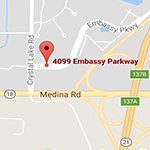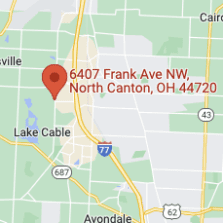What Is Presbyopia?
Presbyopia is an eye condition that makes it hard for middle-aged and older people to see things up close. Age-related farsightedness, presbyopia, is a normal part of the aging process.
Presbyopia is the resulting refractive error where the lens, an inner part of the eye that helps the eye focus, stops focusing light correctly on the retina, a light-sensitive layer of tissue at the back of the eye.
Symptoms of Presbyopia
Symptoms include:
- Trouble seeing up close
- Needing to hold reading materials farther away to focus on them
- Eye strain, when your eyes feel tired or sore
- Headache
Presbyopia gets worse over time, but it usually stops getting worse after age 65.
What Causes Presbyopia?
As you age, the lens in your eye gets harder and less flexible, and it stops focusing light properly on the retina. This makes nearby objects look blurry.
Everyone gets presbyopia as they get older, usually after age 45. Many people have another refractive error in addition to presbyopia, such as myopia. Myopia causes difficulty seeing far away.
Treatments for Presbyopia
In the early stages of presbyopia, you can make some simple changes to help you read, such as:
- Holding reading materials farther away
- Choosing large-print books or increasing font size on the computer
- Using brighter reading lights
As your presbyopia gets worse, you’ll probably need glasses or contact lenses to help you read. Some people buy over-the-counter reading glasses or “readers,” but your eye doctor can prescribe lenses to help you see as clearly as possible.
Presbyopia vs. Myopia
Presbyopia and myopia are two common refractive errors that an eye doctor can detect during an eye exam. These two conditions typically affect different age groups, change visual clarity at different distances, and cause different changes in the eye itself.
Key differences include:
- Age: Presbyopia is primarily caused by aging, developing in a person’s mid-40s and usually worsening until their 60s. Myopia commonly develops in children and adolescents.
- Vision changes: Presbyopia affects close-up vision or reading vision. Myopia affects distance vision, causing far away objects to become blurry. The severity of each refractive error can vary.
- Physical changes in the eye: With presbyopia, the lens hardens over time, until it doesn’t bend properly to refract light and focus on close objects. With myopia, the altered shape of the eye changes the way they focus light. People with myopia have an eyeball that is too long instead of round, or a cornea that is too curved. These shapes cause light to be refracted inaccurately.
Manage Presbyopia With Northeast Ohio Eye Surgeons
The eye care experts at Northeast Ohio Surgeons can treat presbyopia, myopia, and other vision conditions so you can have the clearest vision possible. Dr. Sandra Travaglianti, O.D., specializes in presbyopia and myopia control, contact lenses, and dry eye disease. If you’re struggling with presbyopia or have any other concerns about your vision, request an appointment at NEOES today.














Recent Comments